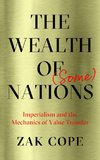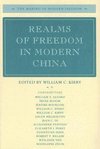
-
 Anglický jazyk
Anglický jazyk
1616 establishments
Autor: Source: Wikipedia
Source: Wikipedia. Pages: 30. Chapters: Populated places established in 1616, States and territories established in 1616, Biddeford, Maine, Medellín, Belém, Cambriol, Essequibo, Santa Teresa la Antigua, Danish East India Company, Royal Convent of La Encarnación,... Viac o knihe
Na objednávku
14.40 €
bežná cena: 16.00 €
O knihe
Source: Wikipedia. Pages: 30. Chapters: Populated places established in 1616, States and territories established in 1616, Biddeford, Maine, Medellín, Belém, Cambriol, Essequibo, Santa Teresa la Antigua, Danish East India Company, Royal Convent of La Encarnación, Sirmur, Cours-la-Reine, Hofje In den Groenen Tuin, Toyokuni Shrine, Hofje van Guurtje de Waal. Excerpt: Medellín (Spanish pronunciation: ), officially the Municipio de Medellín (Spanish) or Municipality of Medellín, is the second largest city in Colombia. It is in the Aburrá Valley, one of the more northerly of the Andes in South America. It has a population of 2.4 million. With its surrounding area, the metropolitan area of Medellín (Area Metropolitana de Medellín), it is the second largest city in Colombia in terms of population and economy, with more than 3.5 million people, and ranks in population as the 91st of the world's largest urban agglomerations. Medellín was founded in 1616 by the Spaniard Francisco Herrera Y Campuzano as Poblado de San Lorenzo (Saint Lawrence Town) in present-day El Poblado. In 1675 the queen consort Mariana of Austria created the Villa de Nuestra Señora de la Candelaria (Town of Our Lady at Candelaria). In 1826 the city was named the capital of the Department of Antioquia by the National Congress of the young Republic of Greater Colombia, comprised by present day Colombia, Venezuela, Ecuador and Panama. In 1803 the University of Antioquia, one of the most prestigious in Colombia, was founded. After Colombia won its independence from Spain, Medellín became the capital of the Federal State of Antioquia until 1888, with the proclamation of the Colombian Constitution of 1886. During the 19th century, Medellín was a dynamic commercial center, first exporting gold, then producing and exporting coffee. After the Thousand Days War (1899 - 1902), Medellín was the first Colombian city to take part in the Industrial Revolution with the opening of textile companies, and transport projects such as railways that allowed its export business to develop. In addition, its people founded several universities and vocational training institutions. At the beginning of the 21st century, the city has regained industrial dynamism, with the construction of the Metro de Medellín railway, and liberalized development policies, improved security, and improved educati
- Vydavateľstvo: Books LLC, Reference Series
- Rok vydania: 2013
- Formát: Paperback
- Rozmer: 246 x 189 mm
- Jazyk: Anglický jazyk
- ISBN: 9781156353936






 Ruský jazyk
Ruský jazyk 





